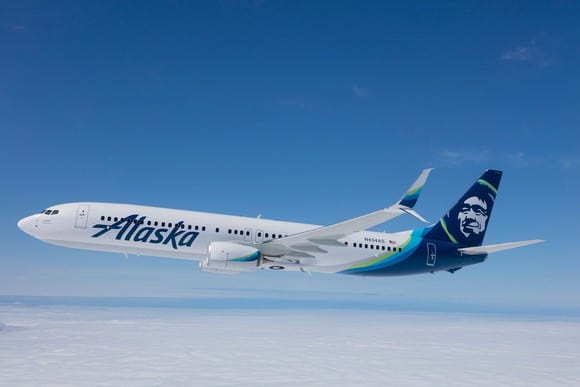
In some dividend investors’ minds, there’s no such thing as too much dividend income. Yet often, stocks that carry extremely high dividend yields end up being riskier than many shareholders appreciate, and that can lead to a lot of pain if a company has to cut its dividend in the future.
Rather than looking for the top yields now, it can be smart to look for dividend stocks with more modest payouts that have the potential to see their future dividends grow dramatically. You can find companies with the capacity to double their dividends across the market, and Alaska Air Group (NYSE:ALK), Greenbrier (NYSE:GBX), and Comcast (NASDAQ:CMCSA) could all potentially deliver substantial dividend growth in the years to come.
Alaska flies higher
Alaska Air Group is a good dividend stock in an industry that has historically been less than ideal for income investors. Throughout much of the airline industry’s history, the need to reinvest any and all cash flow back into financing maintenance and upgraded aircraft made it quite rare to see stocks pay any dividends at all, let alone significant ones. Yet Alaska Air supports a dividend yield of 1.9%, almost matching the market average, and it’s seen its split-adjusted quarterly payout triple just since late 2013.
Even though some have worried about the prospects for a downturn for airlines, Alaska has done a good job of weathering headwinds, and investors are increasingly enthusiastic about the airline’s ability to return to consistent earnings growth. With current projections for more than $5 per share in earnings in 2018 and $7 for 2019, a doubling of the dividend to $2.56 per share on an annual basis still wouldn’t raise its payout ratio of dividends to earnings so high as to raise major concerns. What’s more likely is a gradual rise over time, with healthy percentage dividend increases happening year in and year out.
Rolling down the track with Greenbrier
Greenbrier also is in the transportation business, but its focus is much different. The company specializes in the railcars that railroads use to transport vital goods, including tank cars for energy products.
Greenbrier rode the wave of demand for energy transport by rail in the early 2010s. At that time, crude oil prices were solidly in the triple digits and remote areas like the Bakken shale play in North Dakota lacked readily available pipeline delivery systems. Therefore, they largely needed to rely on existing rail lines to ship oil to market. Oil’s subsequent plunge put pressure on that demand, but Greenbrier has worked hard to emerge from difficult conditions and looks poised to enjoy the benefits of rising oil, once again.
Greenbrier currently pays $1 per share annually in four quarterly payments, and that works out to a yield of 2.1%. Yet with sustained earnings expectations of around $4 per share for both this year and next, Greenbrier doesn’t have such a high payout ratio that it couldn’t choose to double its dividend if it wanted to. The more important future consideration is whether railroads can stay healthy and drive demand for railcars of all types, but for now, Greenbrier looks like it’s starting to see a more favorable period emerge.
Comcast looks to preserve its cash cows
Finally, Comcast has a lot of room to consider dividend increases. The cable giant already pays a healthy 2.2% dividend yield, with a recent boost to its quarterly payout adding more than 20%, to bring it to $0.19 per share. That’s almost double what Comcast paid less than five years ago. With the company looking to earn about $2.50 per share this year and close to $2.75 per share in 2019, a doubling of that payout amount to roughly $1.50 per share still would leave Comcast’s payout ratio in the 50% to 60% range.
Investors have been anything but convinced about Comcast’s future strategic vision, especially with the general trends toward cord-cutting and uncertainty about whether the company would engage in massive acquisitions to try to bulk up on key assets. Underneath those concerns, though, Comcast’s fundamental businesses are quite sound, including a good television broadcasting environment, solid theme park revenue, and the potential for blockbuster studio releases on the horizon. Combine that with strong consumer demand for broadband services, and it’s possible that Comcast could overcome downward pressure from falling voice and video subscriber counts in the long run.
Look for continued dividend growth
It’s very rare to see a company double its dividend in one fell swoop. What’s more likely to happen is that these companies will continue to pave the way forward with sizable dividend increases in future years. If their fundamental business strength lasts, then by the time their payouts have doubled from current levels, their underlying earnings capacity could well lead you to conclude that another double could happen in the years to come. And that’s a great position for a shareholder.
